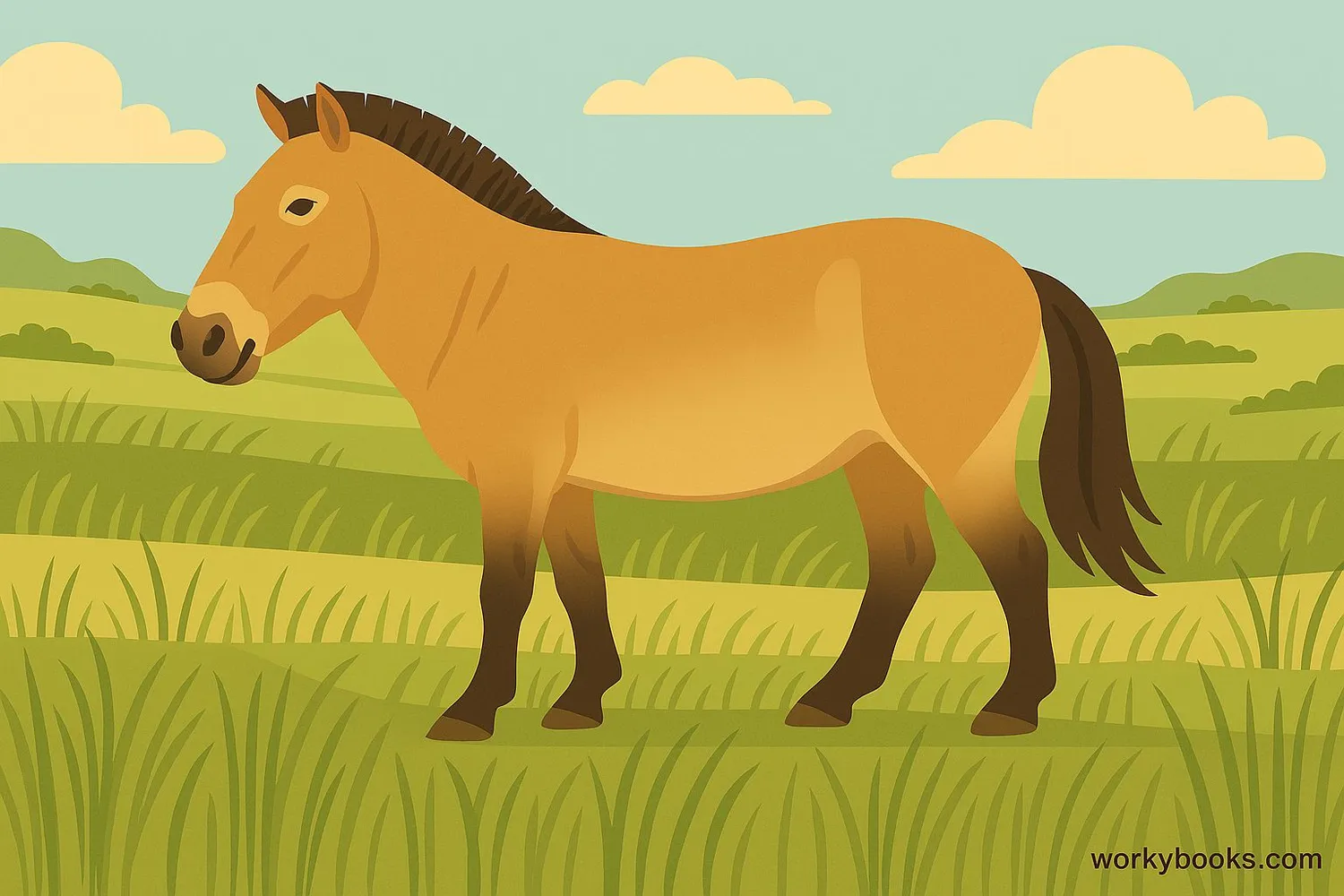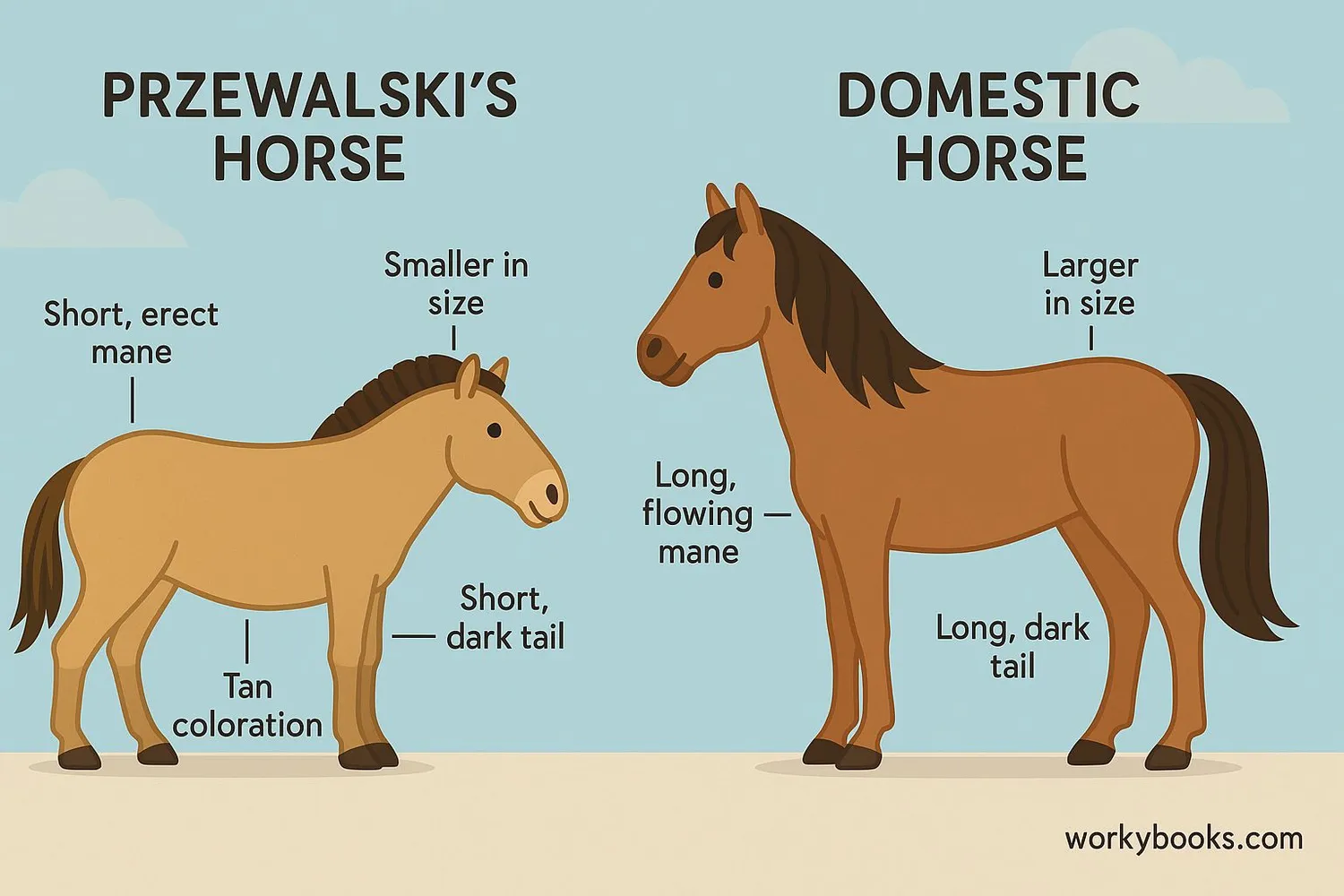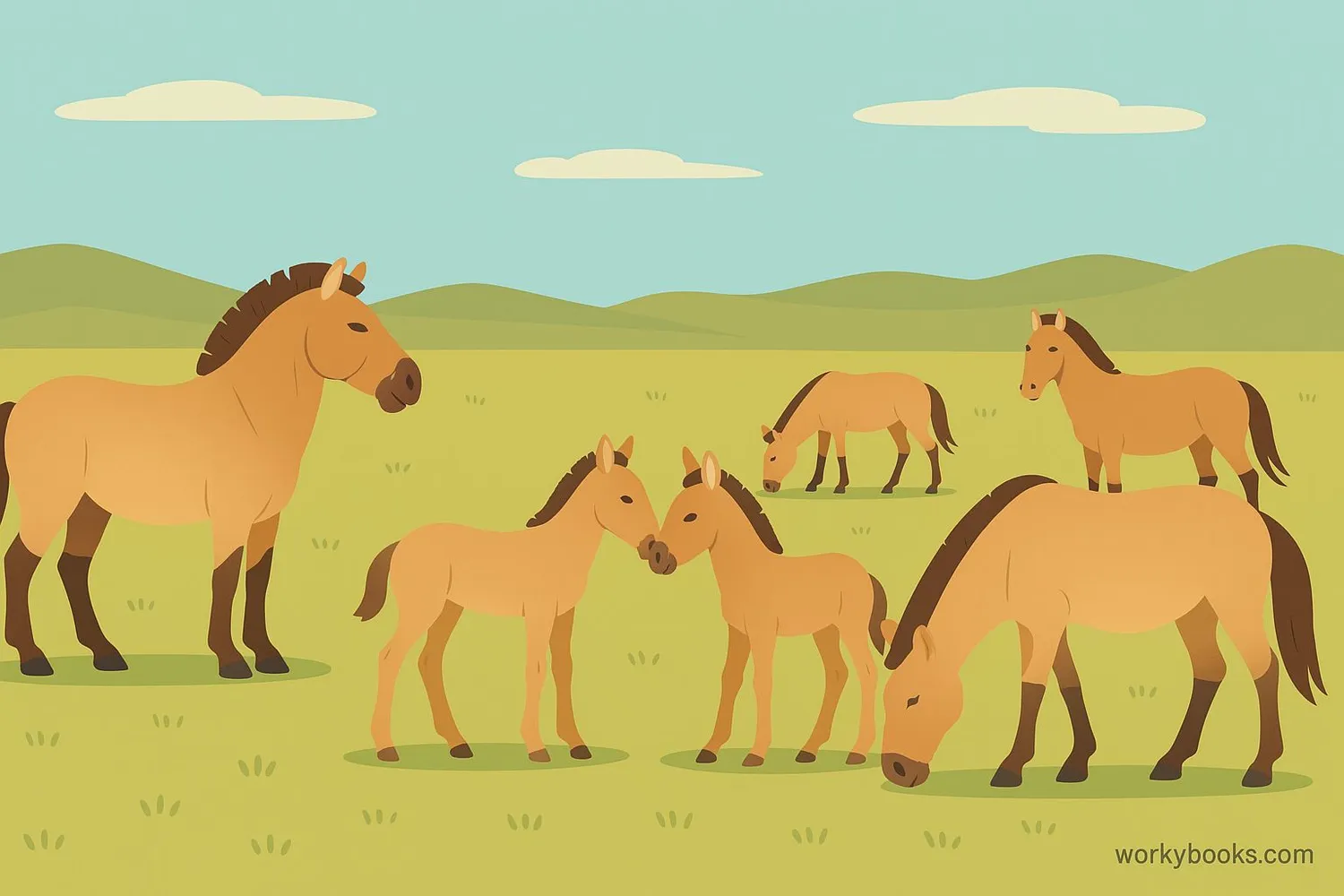Przewalski's Horse - Definition, Examples, Quiz, FAQ, Trivia
Discover the last truly wild horse species and its conservation story
What is Przewalski's Horse?

Przewalski's horse (pronounced "sheh-VAHL-skee") is the last truly wild horse species in the world. Unlike domestic horses that were bred by humans, these horses have never been tamed. They are an important part of Mongolian wildlife and a famous conservation success story.
These horses are smaller than domestic horses, with a stocky build, short legs, and a distinctive upright mane. They have a sandy brown or dun color with a pale belly and dark legs. Scientists consider them a living fossil because they've changed very little from ancient wild horses.
Did You Know?
Przewalski's horses were once extinct in the wild! Thanks to captive breeding programs, they've been successfully reintroduced to their native habitats.
History and Conservation

Przewalski's horses have an amazing conservation story:
Discovery
Named after Russian explorer Nikolai Przewalski who first described them scientifically in 1878
Decline
By 1969, they were extinct in the wild due to hunting and habitat loss
Captive Breeding
Only 12 horses in zoos formed the breeding program that saved the species
Reintroduction
First horses returned to Mongolia in 1992
Today
Over 2,000 horses exist, with about 400 living wild in Mongolia
This is one of the most successful species recovery stories in history. Scientists carefully managed the captive breeding program to maintain genetic diversity. Today, Przewalski's horses live in protected areas in Mongolia, China, and Kazakhstan, and are classified as Endangered rather than Extinct in the Wild.
Physical Characteristics

Przewalski's horses have several unique features that make them different from domestic horses:
Size
4-4.5 feet tall at the shoulder (smaller than most domestic horses)
Color
Dun-colored with dark legs, a dorsal stripe, and often zebra-like leg stripes
Mane & Tail
Short, upright mane with no forelock; tail hair starts lower than domestic horses
These horses have 66 chromosomes, while domestic horses have 64. Their stocky build and short legs make them well-adapted to harsh environments. Their teeth are larger and their skull shape is different from domestic horses, showing they are a distinct species.
Habitat and Behavior

Przewalski's horses are perfectly adapted to life in the harsh Asian steppes:
Habitat
Grasslands, steppes, and semi-deserts of Central Asia
Social Structure
Live in small family groups led by a stallion, or bachelor male groups
Diet
Grasses, leaves, and bark - they can survive on poor quality food
These wild horses are tough survivors. They can endure extreme temperatures from -40°F in winter to 100°F in summer. Unlike domestic horses, they don't need to drink water every day, getting most moisture from plants. Their social structure helps protect the group - stallions watch for predators while mares and foals graze.
Wild Behavior
Przewalski's horses communicate through sounds, body language, and scent marking. Stallions often fight to protect their family groups.
Przewalski's Horse Quiz
Test your knowledge about these amazing wild horses with this quiz!
Frequently Asked Questions
Here are answers to common questions about Przewalski's horses:
Wild Horse Trivia
Discover some amazing facts about Przewalski's horses:
Genetic Rescue
The entire species was saved by just 12 horses! Scientists carefully managed breeding to maintain genetic diversity. Recently, a cloned horse from preserved DNA added new genetic material to the population.
Social Structure
Przewalski's horses have complex social lives. Family groups stay together for years, and stallions recognize their grown offspring even after years apart. Bachelor males form strong friendships while waiting to start their own families.
Tough Survivors
These horses can survive temperatures from -40°F to 100°F! Their winter coats are so thick that snow accumulates on their backs without melting. They can go days without water by getting moisture from plants.
Ancient Art
Przewalski's horses appear in cave paintings dating back 20,000 years! These ancient artworks show the horses with the same distinctive upright manes we see today, proving how little they've changed over millennia.


